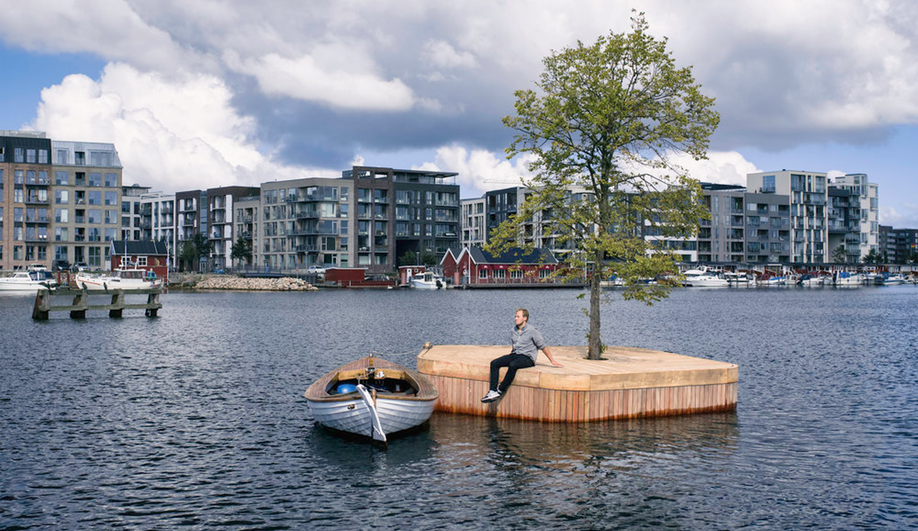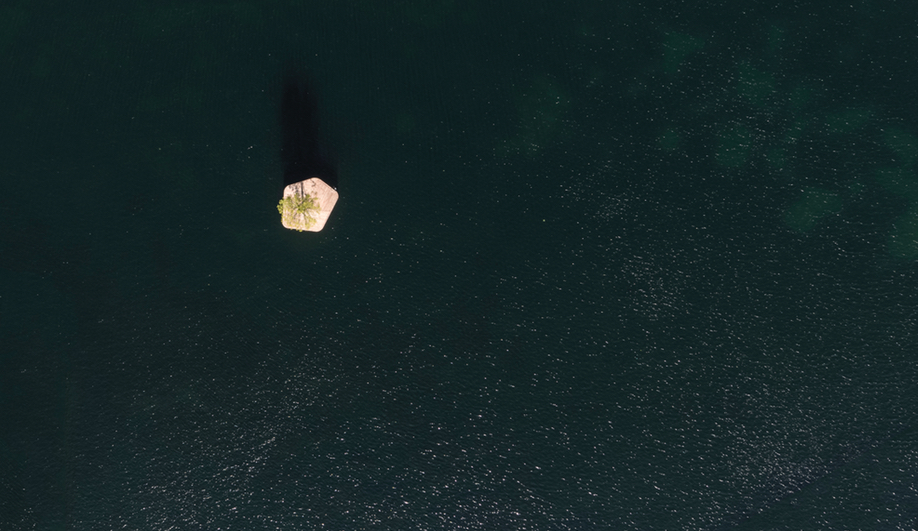Copenhagen is defined by water. The Danish city is crisscrossed with bridges and canals; it is separated from Mälmo by the Øresund Strait; and it sits at the mouth of the Baltic Sea. Water is so beloved, in fact, that massive swimming facilities and the city’s four Islands Brygge – or open-air baths – can be found on Copenhagen’s shores. Compared to the many sprawling public spaces already enlivening the seafront, the city’s latest waterside addition is tiny – but ingenious.

The CPH-Ø1 is a manmade floating island that is situated in the Copenhagen Harbour. Designed by Australian architect Marshall Blecher and Fokstrot’s Magnus Maarbjerg, CPH-Ø1 is defined by a single tree and, well, not much else. But that’s the point. “It is up to the users of the island to dictate what features it should have,” say the project’s makers.
Floating islands like CPH-Ø1 could also provide resilient public spaces for Copenhagen, a rapidly developing metropolis that will be impacted heavily by climate change. Flooding has become normalized in the city, and its sea level is projected to rise 70 cm by 2100. “The project is aimed at focusing on an improved harbour environment, as well as how climate impacts and elevated water levels can affect urban areas,” say the designers.

The 20-square-metre island, accessible to swimmers, boaters or kayakers, can be used for anything the public desires: it can host small events, barbecues, fishing or even camping. A 6-foot-tall small-leaf Linden tree – a species known for its symmetrical growth habits – sits at the island’s centre, provided by SITAS (Scandinavian Instant Trees).
Throughout the year, multiple versions of the island will be moved to different places, turning forgotten stretches of water into outdoor attractions. “The islands will be dispatched on suitable locations around the inner harbour but will also find their way to more forgotten and underused corners, catalyzing life and activity,” say the designers.

What’s more fascinating about the CPH-Ø1 is its construction. The entire island is hand-made, crafted using boat-building techniques. Blecher and Maarbjerg turned to sustainable materials to build the island, creating its platform from local recycled wood; the structure is supported by a network of recycled plastic bottles.

At this stage, the CPH-Ø1 is a prototype. But Blecher and Maarbjerg eventually hope to build more floating spaces, which will form a “parkipelago.” Those islands can be linked together in the wintertime, when swimming isn’t possible, to form a peninsula – and eventually, they hope to surround them with floating saunas, gardens, stages, sail-in cafés and mussel farms.

The two already have plans underway for CPH-Ø2, CPH-Ø3, CPH-Ø4, with the hope that they become a reality in the coming years. If so, the parkipelago will be yet another reason to head to Copenhagen’s waterfront.






